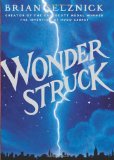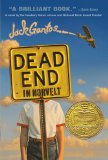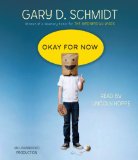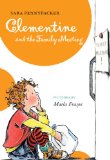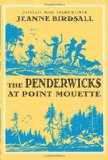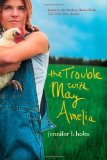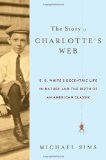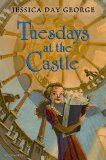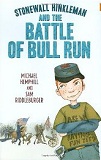Top 100 Chapter Books Poll – Again!
As I said last night, Betsy Bird, who writes School Library Journal’s Fuse #8 blog, is doing another Top 100 Chapter Books Poll. You have two more days to get in your votes! Anyone who loves books, do this soon! You’ll be so glad you did!
I had a terrible time limiting my list of Chapter Books to only ten. In fact, the only way I could do it at all was to take out some of my absolute favorites because part of what I love about them is the romance. Come to think of it, ALL of these choices, I read at one time or another to one or both of my boys (or my husband did). So I can safely say that all of these books are definitely children’s books. Though I can also firmly say that there are adults who will love them, too. And I’m afraid I only read half of them as a child myself.
I definitely still keep wavering with the final choices. In fact, let’s see if I make any last-minute changes as I post this list!
The Books I Believe are the Top Ten Chapter Books of All Time:
1. Anne of Green Gables, by L. M. Montgomery
I mentioned last night that I would have loved to include Emily of New Moon. But this is right. Anne is classic. Anne is the heroine who started it all. I first read this book in 10th grade, and I found it a breath of fresh air after all the adult books I’d been reading. Then, as I was in high school and college, they slowly came out with more and more of L. M. Montgomery’s books. I also own all the volumes of her journals and everything I could get my hands on of hers. My absolute favorite is The Blue Castle, but it’s actually a book for adults. Anyway, Anne Shirley is a character who comes alive.
2. Momo, by Michael Ende
I know this one won’t make the list, but I can’t let it go unrecognized. This was the first book I ordered from Book-of-the-Month Club, and it was so good, I blame it for all the other books I ended up ordering. When I moved to Germany, my first purchase was a copy of this book in the original language (German). Momo is a little girl with a gift for listening. So when gray men come and steal people’s time by convincing them to save it, Momo is the only one who can see them, because she really listens to them. This book is mythic in scope.
3. Winnie-the-Pooh, by A. A. Milne
I tell the whole story of how much I love this book in my review. Let’s just say that I remember my mother reading it to me. Then I remember reading it to my little brothers and sisters. Then, in college, I learned that one of the most fun things to do was read with a group of friends, where different people read the different voices. And finally, I got to read it to my sons, or together with my sons. Oh, and I’ve read it in German!
One of the funny things is that it reads on different levels. I remember as a child just taking the things said as perfectly reasonable and matter-of-fact that now I think are hilarious. This book is a work of genius.
I also have to mention that I brainwashed both my sons into loving these characters so that the very first characters they pretended to be were ones from Winnie-the-Pooh. In fact, my son learned early to write his own name — “P-O-O-H.” (When he called me in the night with the call, “Pi–iglet!”, I thought he’d gone too far.)
Now, to be honest, The House at Pooh Corner is a little better, since it includes Tigger. However, last time I voted for The World of Pooh in order to include both and my vote was totally wasted. I’m sure everyone who reads the list will be thinking of ALL the Pooh stories.
4. The Lion, the Witch, and the Wardrobe, by C. S. Lewis
I remember at my vast old age in 7th grade sadly concluding that I was too old for the Narnia books now. (I had already read them many times.) Then I took them up again in college and found new riches. I know I will never “outgrow” them again. Of course, it does help that I’m a Christian, and love the insights about God found in Lewis’s writings. But the magic of the stories works fully, even without that. (And I appreciate that part much more as an adult than I did as a kid.)
As I said in my review, no kid who reads this book will ever look at a closet door the same way again.
5. The Hobbit, by J. R. R. Tolkien
I remember reading this book on the way to school and having to stop right when Bilbo was in the tunnel leading to the dragon’s lair. That was excruciating!
6. The Thief, by Megan Whalen Turner
When we were reading to both our kids together, my older son said we had to read this book next. I was skeptical, but by the time I finished, I was a complete fan. And it grows on me with each rereading — because I notice more clever things each time. The second book, The Queen of Attolia would be near the top of my YA list.
7. Harry Potter and the Sorcerer’s Stone, by J. K. Rowling
Oh, our family got hours and hours and hours of enjoyment out of these books. We read all of the first five out loud as a family, with no reading ahead. (Or as little reading ahead as we could stand.) We read books #3 and #4 on family vacations, and ended up putting off a visit to Neuschwanstein Castle because we just had to finish Harry Potter and the Goblet of Fire.
8. A Wrinkle in Time, by Madeleine L’Engle
This book isn’t perfect, but how it endures. I didn’t read this until I was in college. When I did, I was so grateful to the person who told me about it.
9. Pippi Longstocking, by Astrid Lindgren
This book has such childlike exuberance. Pippi is someone we’d talk about as if we knew her. (“And she sleeps with her feet on the pillow!”) This is a child-sized tall tale.
10. Half Magic, by Edward Eager
My favorite of his is Seven Day Magic, but Half Magic is more well-known, the first one I read, and a classic concept.
Oh, so do I really have to leave out so many? I wanted to include Little Britches, by Ralph Moody, Dealing with Dragons, by Patricia C. Wrede, The Wonderful Wizard of Oz, by L. Frank Baum, and Black Beauty, by Anna Sewall. I hope other people include them! And the ones I decided were YA, but that I love, love, love are The Blue Sword, by Robin McKinley, The Goose Girl, by Shannon Hale, and The Witch of Blackbird Pond, by Elizabeth George Speare.
I am helping Betsy compile the results, but I am sure if I changed some answers, I’d get found out, and she would withdraw the privilege. So I will be good. Sigh.
The results will be better the more people send in their lists! So get moving on that! And I do really enjoy your comments. What would be on your list?

